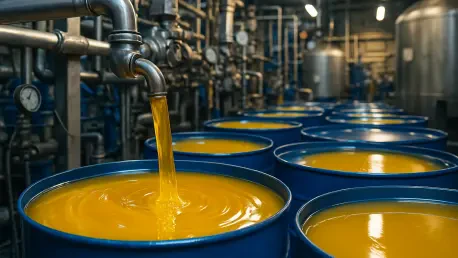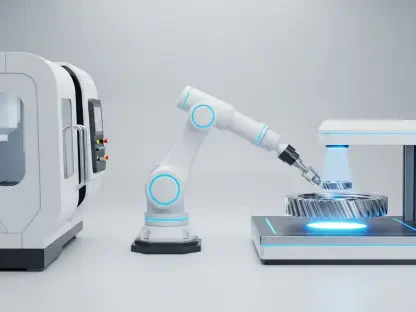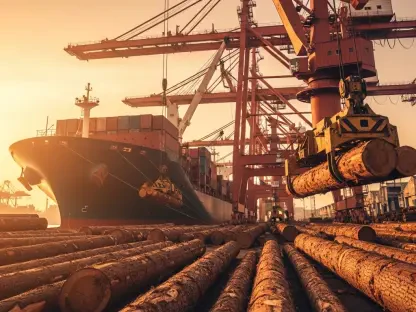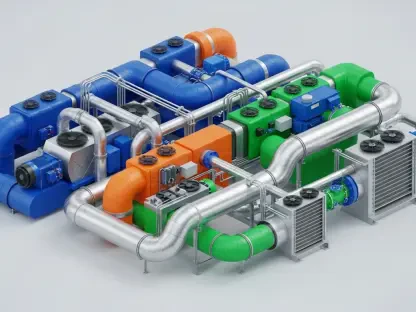In an era where industries are increasingly pressured to balance growth with environmental responsibility, Chevron Phillips Chemical (CPChem) has taken a significant step forward with a major expansion of its low-viscosity polyalphaolefins (LV PAO) production facility in Beringen, Belgium. This development has effectively doubled the plant’s output to an impressive annual capacity of 120,000 metric tons, establishing it as the largest decene-based LV PAO plant in Europe. LV PAOs are critical components in advanced automotive and industrial lubricants, as well as in cutting-edge applications such as electric vehicle drivetrains and wind turbine gear systems. The expansion not only addresses the rising global demand for these high-performance materials but also integrates sustainable practices, reflecting a broader industry shift toward eco-friendly solutions. This strategic move by CPChem highlights a commitment to innovation while tackling the dual challenges of market needs and environmental impact, setting a compelling precedent for the specialty chemicals sector.
Driving Market Growth with Enhanced Capacity
The expansion of CPChem’s Beringen facility marks a pivotal moment in meeting the escalating global demand for LV PAOs, which are essential for creating lubricants that perform under extreme conditions in modern machinery. With the doubled production capacity, the plant is now positioned to supply a wider range of industries, from automotive manufacturers developing electric vehicle technologies to industrial sectors requiring durable gear oils for heavy equipment. This increase in output ensures that CPChem can keep pace with market trends, particularly as emerging technologies demand more efficient and reliable lubrication solutions. Beyond sheer volume, the company has maintained a sharp focus on product quality, ensuring that the expanded production does not compromise the high standards that have defined its reputation. The strategic importance of this growth lies in its ability to support industries transitioning to more advanced systems, thereby reinforcing CPChem’s role as a key player in the specialty chemicals landscape across Europe and beyond.
Moreover, the Beringen location offers unique logistical advantages that amplify the impact of this expansion on market reach. Situated in close proximity to major European markets, the facility benefits from access to a skilled workforce, robust supply chains, and nearby feedstocks, all of which streamline operations and reduce delivery times to customers. This geographic edge enhances CPChem’s ability to respond swiftly to client needs, fostering stronger relationships with partners across the continent. The integration with existing European assets further optimizes efficiency, creating a seamless network that supports both production and distribution. By leveraging these strengths, CPChem not only boosts its capacity to meet current demand but also positions itself to adapt to future market shifts, particularly as industries like renewable energy and high-performance computing continue to grow. This thoughtful expansion strategy underscores a commitment to operational excellence while ensuring that the company remains competitive in a rapidly evolving global economy.
Pioneering Sustainability in Chemical Manufacturing
A standout feature of CPChem’s expansion in Beringen is its emphasis on sustainability, reflecting an industry-wide push toward greener practices in chemical production. The facility has incorporated advanced electrification systems designed to reduce reliance on natural gas, a move that significantly lowers greenhouse gas emissions. This technological upgrade aligns with long-term energy efficiency goals, demonstrating how industrial growth can coexist with environmental stewardship. By prioritizing such innovations, CPChem addresses the urgent need for sustainable materials in lubricants, which are increasingly critical as industries seek to minimize their ecological footprint. The focus on reducing emissions through modern systems sets a benchmark for other players in the sector, proving that operational scale-up does not have to come at the expense of the planet. This initiative positions the company as a leader in balancing productivity with a reduced environmental impact.
In addition to electrification, CPChem is actively exploring renewable electricity options to further shrink the carbon footprint of the Beringen plant. This forward-thinking approach mirrors broader trends in the chemical industry, where companies are under growing scrutiny to adopt cleaner energy sources. The potential shift to renewables could enhance the facility’s sustainability profile, making it a model for future expansions worldwide. Such efforts resonate with customers and stakeholders who prioritize environmentally responsible suppliers, particularly in sectors like automotive and renewable energy where sustainability is a key purchasing factor. The commitment to exploring these options reflects a strategic vision that extends beyond immediate gains, aiming for a lasting positive impact on both the environment and the company’s market standing. By embedding these green initiatives into the core of its operations, CPChem not only meets regulatory and societal expectations but also paves the way for a more sustainable future in specialty chemicals.
Reflecting on a Sustainable Legacy
Looking back, CPChem’s expansion of the Beringen facility stands as a testament to the power of integrating industrial advancement with environmental consciousness. The doubling of LV PAO production capacity addressed critical market demands while the adoption of electrification systems marked a significant stride in reducing emissions. Strategic location benefits further solidified the company’s foothold in Europe, ensuring efficient service to a growing customer base. As the industry reflects on this milestone, the focus shifts to how such initiatives could inspire broader adoption of sustainable practices. Future considerations include scaling similar green technologies across other facilities and deepening investments in renewable energy. The path forward involves collaboration with industry peers to set new standards for eco-friendly manufacturing, ensuring that growth and sustainability remain intertwined. This legacy of innovation and responsibility offers a blueprint for tackling the evolving challenges of the specialty chemicals sector.









